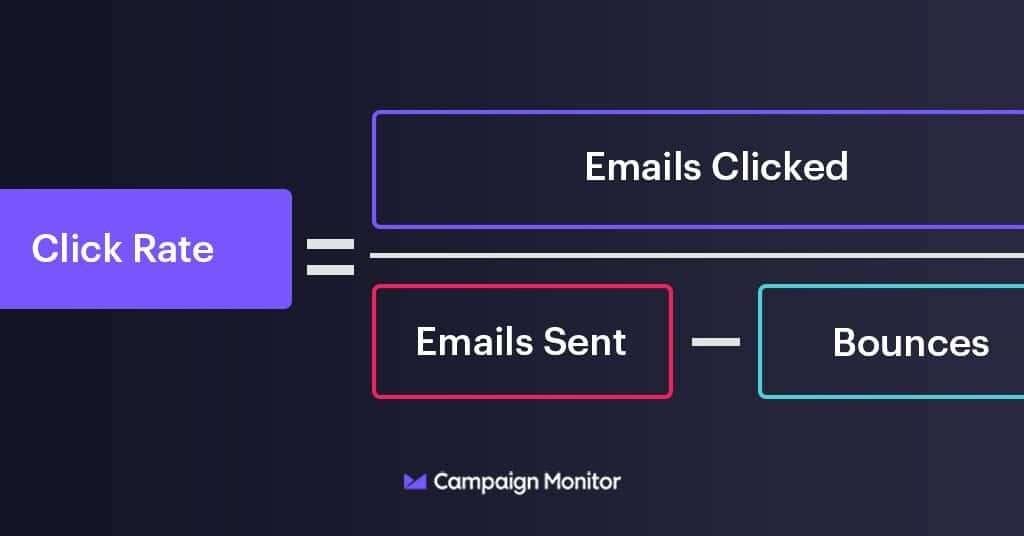The click-through rate, also known as email click rate, shows how many people clicked on a hyperlink, call-to-action (CTA), or image in an email. To calculate it, you divide the total number of clicks by the total number of delivered messages. This is what the equation looks like:

The click-through rate indicates how engaged your email audience is. Unlike the click-to-open rate, which measures activity among those who opened the email, this metric shows the overall interaction from everyone who received the email. It gives you an idea of what portion of your audience finds your content interesting over time.
Some Email Service Providers (ESPs) use unique clicks to calculate this metric, while others don’t. A unique click is recorded the first time a subscriber clicks on a campaign link. It doesn’t count if the same link is clicked multiple times.
According to Campaign Monitor’s annual email marketing benchmarks, the average click-through rate should be around 2.6%. You can find more detailed averages by day and industry in the complete report available here.
Why Monitoring CTR is necessary
The primary aim of monitoring click-through rate is to assess engagement. By analyzing click-through rates, you can evaluate performance in the following aspects:
1. Overall interest or potential email fatigue
2. Effectiveness of email content
3. Placement of links within the email
4. Number of links included
5. Types of media used
While the top part of your equation counts how many times your audience clicks a particular email campaign, there are two methods to track these clicks: unique link clicks and all link clicks.
What is Unique Link Clicks?
Unique link clicks: Recorded only once for each user who clicks on a link. This means the CTR indicates the percentage of recipients who clicked through an email.
What is All Link Clicks?
All link click: Registers any click made through an email, regardless of whether the same user clicks multiple times. The CTR indicates the ratio of “emails sent” to “visits to your site.”
It’s crucial to understand the distinction between “emails delivered” and “emails sent.” Formulas using “emails sent” will result in a CTR that is less than or equal to the formula using “emails delivered.” Why? The “emails sent” metric doesn’t factor in bounces, so it tends to be higher. “Emails delivered” represents “emails sent” after deducting bounces.
You can choose either method, and both are effective. However, many marketers prefer using an equation that uses “emails delivered” as the main denominator to ensure that deliverability problems don’t affect their CTR analysis.
Evaluating email performance is always crucial for identifying areas of enhancement in future campaigns. It’s recommended to combine CTR with other metrics like open rate, CTOR, etc., for optimal results.
Example
If your click-through rate was 4%, it would indicate that out of every 100 people who received your email, four individuals opened it and clicked on a link within the campaign.

